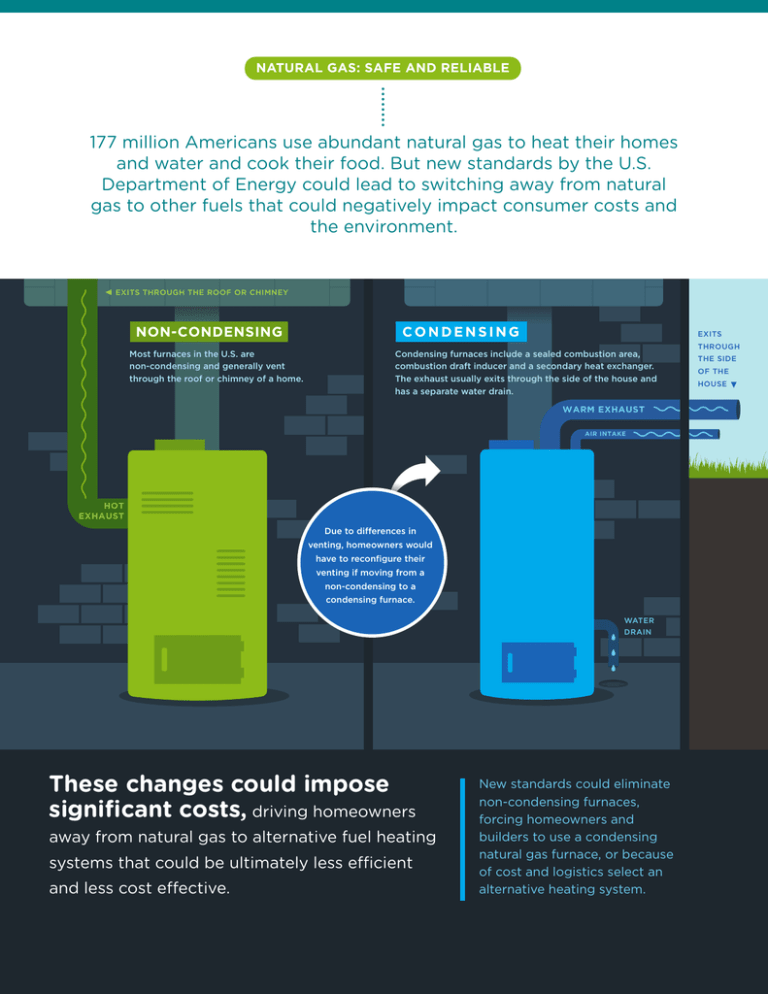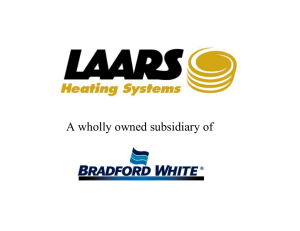Infographic: AGA Furnace Standard
advertisement

NATURAL GAS: SAFE AND RELIABLE 177 million Americans use abundant natural gas to heat their homes and water and cook their food. But new standards by the U.S. Department of Energy could lead to switching away from natural gas to other fuels that could negatively impact consumer costs and the environment. EXITS THROUGH THE ROOF OR CHIMNEY NON-CONDENSING Most furnaces in the U.S. are non-condensing and generally vent through the roof or chimney of a home. CONDENSING EXITS Condensing furnaces include a sealed combustion area, combustion draft inducer and a secondary heat exchanger. The exhaust usually exits through the side of the house and has a separate water drain. WARM EXHAUST AIR INTAKE HOT EXHAUST Due to differences in venting, homeowners would have to reconfigure their venting if moving from a non-condensing to a condensing furnace. WATER DRAIN These changes could impose significant costs, driving homeowners away from natural gas to alternative fuel heating systems that could be ultimately less efficient and less cost effective. New standards could eliminate non-condensing furnaces, forcing homeowners and builders to use a condensing natural gas furnace, or because of cost and logistics select an alternative heating system. THROUGH THE SIDE OF THE HOUSE New standards from the U.S. Department of Energy could eliminate non-condensing furances. H OW WOULD THESE STAN DAR DS I M PAC T HOMEOWNERS? Structural Modifications These changes could require homeowners to make structural modifications to their home. New condensing furnaces cannot be connected to the existing venting in a home, and require a new venting system and possible relocation of the equipment. This increases the installation cost of the more energy efficient natural gas heating system options. Challenges There are situations where a homeowner or builder wouldn’t be able to install a condensing furnace, forcing them to switch to another fuel for heating. Challenges include if a homeowner could not access an external wall, like in apartments or condominiums, if outside venting is restricted by a homeowners’ association, or if a homeowner could not meet venting requirements related to nearby windows, doors, or other air intakes. Increased Emissions Unintended Consequences Homeowners and builders would be incentivized to move away from natural gas because of the associated costs and changes that would need to be made to the home, causing operating costs, energy usage and emissions to go up. Increased Operating Costs Increased Energy Usage


